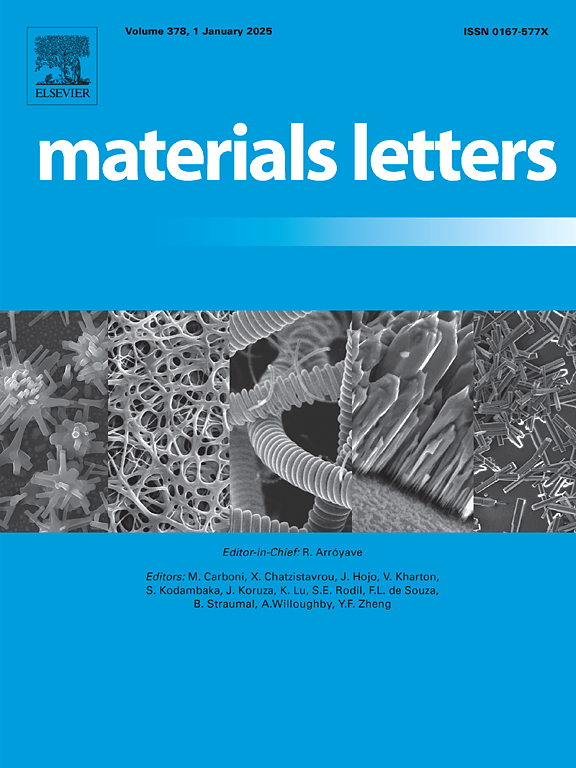新型希夫碱绿色缓蚀剂在1 M盐酸中对低碳钢的制备及评价
IF 2.7
4区 材料科学
Q3 MATERIALS SCIENCE, MULTIDISCIPLINARY
引用次数: 0
摘要
以水杨醛和4-噻唑胺为原料,微波缩合合成了新型希夫碱2-[(4-噻唑胺)甲基]苯酚(TAMP)。对该化合物进行了光谱表征,并在1.0 M HCl中对碳钢进行了缓蚀剂评价。进行了多项试验来评价该抑制剂的疗效。因此,电化学和失重分析证明了浓度依赖性的抑制效率,在500mg /L时达到77.4%。此外,扫描电镜证实了钢表面通过吸附形成保护膜。此外,理论研究(DFT/MD模拟)阐明了金属/电解质界面的吸附机理,揭示了协同质子化和平面取向是实现高表面覆盖率(89%)和电荷转移的关键因素。本文章由计算机程序翻译,如有差异,请以英文原文为准。
Preparation and evaluation of a novel Schiff Base as a green corrosion inhibitor for mild steel in 1 M HCl
A novel Schiff base, 2-[(4-thiazolylamino) methyl] phenol (TAMP), was synthesized via microwave-assisted condensation of salicylaldehyde and 4-thiazolamine. The compound was characterized spectroscopically and evaluated as a corrosion inhibitor for carbon steel in 1.0 M HCl. Multiple tests were carried out to evaluate the inhibitor's efficacy. Hence, electrochemical and weight loss analyses demonstrated concentration-dependent inhibition efficiency, reaching 77.4 % at 500 mg/L. In addition, SEM confirmed protective film formation via adsorption on the steel surface. Furthermore, theoretical studies (DFT/MD simulations) elucidated the adsorption mechanism at the metal/electrolyte interface, revealing synergistic protonation and planar orientation as key factors enabling high surface coverage (89 %) and charge transfer.
求助全文
通过发布文献求助,成功后即可免费获取论文全文。
去求助
来源期刊

Materials Letters
工程技术-材料科学:综合
CiteScore
5.60
自引率
3.30%
发文量
1948
审稿时长
50 days
期刊介绍:
Materials Letters has an open access mirror journal Materials Letters: X, sharing the same aims and scope, editorial team, submission system and rigorous peer review.
Materials Letters is dedicated to publishing novel, cutting edge reports of broad interest to the materials community. The journal provides a forum for materials scientists and engineers, physicists, and chemists to rapidly communicate on the most important topics in the field of materials.
Contributions include, but are not limited to, a variety of topics such as:
• Materials - Metals and alloys, amorphous solids, ceramics, composites, polymers, semiconductors
• Applications - Structural, opto-electronic, magnetic, medical, MEMS, sensors, smart
• Characterization - Analytical, microscopy, scanning probes, nanoscopic, optical, electrical, magnetic, acoustic, spectroscopic, diffraction
• Novel Materials - Micro and nanostructures (nanowires, nanotubes, nanoparticles), nanocomposites, thin films, superlattices, quantum dots.
• Processing - Crystal growth, thin film processing, sol-gel processing, mechanical processing, assembly, nanocrystalline processing.
• Properties - Mechanical, magnetic, optical, electrical, ferroelectric, thermal, interfacial, transport, thermodynamic
• Synthesis - Quenching, solid state, solidification, solution synthesis, vapor deposition, high pressure, explosive
 求助内容:
求助内容: 应助结果提醒方式:
应助结果提醒方式:


